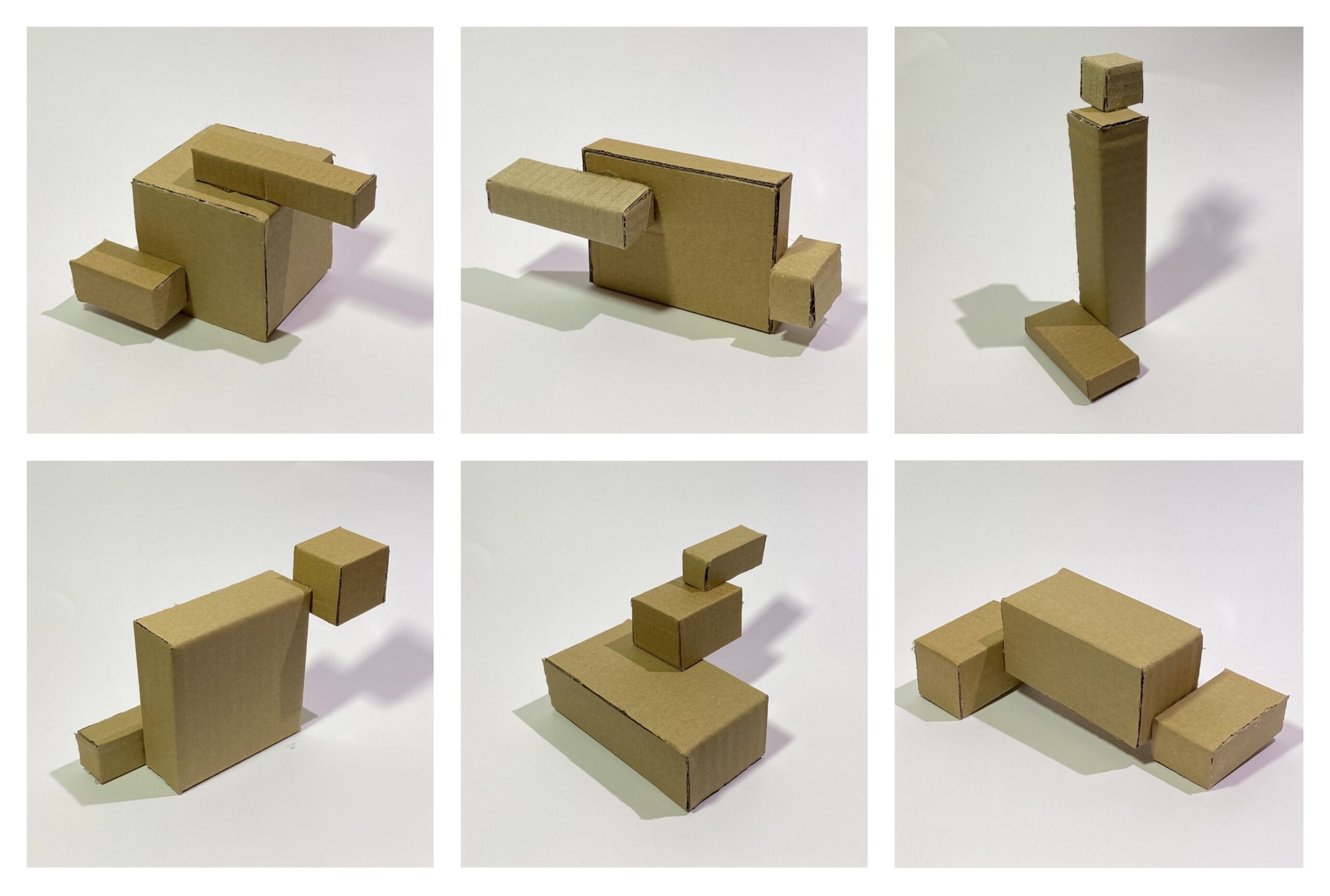For this task, I made 18 cardboard cuboids of unique dimensions, and made them into 6 compositions, in order to explore the relationship of dominant, subdominant and subordinate shapes.
As designers we put shapes together all the time, without really thinking of how they impact each other, so this activity was really eye opening in that sense.
It’s fascinating to see in how many different ways a shape can affect another. It can enhance it, by following the same direction, or by framing it. It can make it appear taller, or smaller. It can literally stop it from falling, which can be seen with the left subdominant block in the third composition. This is also an interesting example of how the dominant shape sometimes cannot work independently from the others.
Ultimately, this task is something I feel I want to try and apply in my future work, as seeing how many things can be achieved by simply moving shapes around, it seems like a great way to make the most effective designs.

I then picked the first volume as it was one I found very dynamic and interesting, and drew an orthographic representation of it, which was really interesting as it got me to see how the blocks interacted from different angles, which I hadn’t payed as much attention to before.

EDIT : I got comments on the fact there wasn’t enough contrast in the size of the blocks in each composition. I also wasn’t too happy about the last two. So I decided to remake some, and improve others. I’m a lot happier with how they are, and I definitely feel some small changes made a big difference.
Additionally, this was an opportunity to take better pictures, using the skills I learned in class and throughout the semester, and it also makes a big difference.






Hi Quentin. This is indeed a wonderful exercise. Especially as you can take your compositions into your hand and truly look at them from all angles. If you ever get to design bigger work, keep this way of looking at form in mind.
Points of improvement for me would be: Your current compositions look like a good starting point. Same with many other compositions of your colleagues. What these compositions mainly need is time. You might want to keep them close by to keep looking at them to eventually revisit this exercise before your final hand in. Take care in the contrast of size in your elements – at the moment they look like they are all ‘agreeing with each other’, no-one really wants to be the dominant, subdominant or subordinate element it seems. What about imagining a more dynamic conversation between them to see what would happen then?
Your orthographic projection is very well presented. The lines you kept help the eye to understand the form. The attention to presentation makes it easy to look at. Well done! We will look at drawing perspective soon, which will help you master this aspect as well.
Really amazing orthographic projection I really like that you added a drawing of your compositions!